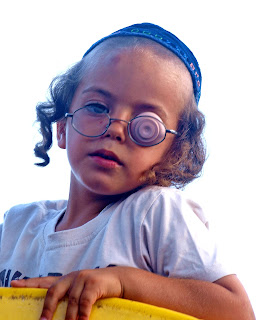Hello again my friends!
Thank you for stopping by for another post.
Today's topic is "children photography". Having 3 children of my own it is a topic close to my heart.
I strongly believe that the matter is classic and timeless. a great child's photo is an investment in childhood that will return dividends long into the future.
There are some great tips and ideas i would like to share with you but in order not to write a lengthy post, I decided to divide the discussion into two separate posts.
Welcome to part one:
The first tip is really a "thumb rule" the ordinary shot (not the artistic kind) and it is to take the photo when the camera is leveled with the child upper body. A common mistake is to point the camera down from an adult point of view. The final outcome is not complimentary.
Here are two examples of photos taken from a child point of view:
Children, especially the young ones, are not always self-conscious it is actually a great advantage for a photographer because it enables him to take a "true" photo – mining not a posed one.
Take a look in the example below:
Children are so happy when they get the chance to play outdoors. They are at their best when they are riding a merry-go-round for example. I used a technique called "panning" (I'll talk about it in a future post) to take the following picture. It will be perfectly fine if you'll take relatively same photo using high shutter speed in order to "freeze the moment".
Children are often hard to shoot because they are always running around hardly staying in one spot enough time to take a decent photo. In order to deal with the said difficulty many modern cameras are equipped with special mode for children photography that enables the photographer to enjoy an active focus that follows the subject keeping him in focus all the time. Another feature of that mode is the ability to take several continuous shots with one click on the shutter release.
The photo below was taken using the "children mode" .
That all for now. I hope you enjoyed the post. I'll try to publish the second part ASAP.
Guy Atar.














